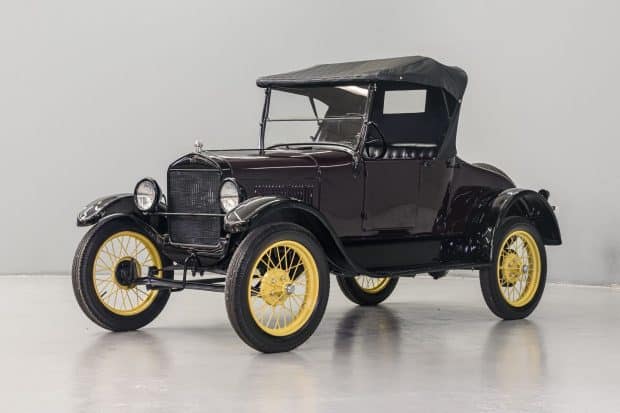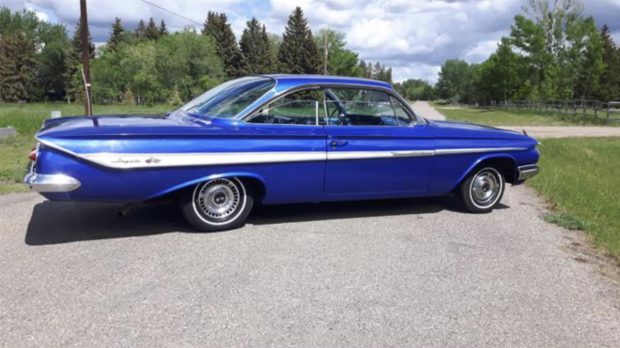American automobile history is a rich tapestry woven with innovation, ingenuity, and a relentless pursuit of excellence. From the early days of the automotive industry to the present, American car manufacturers have left an indelible mark on the world, shaping not only transportation but also culture, technology, and society.

In this article, we delve into the fascinating history of American automobiles, exploring the iconic brands that have defined the industry and captured the hearts of millions of enthusiasts around the globe.
Origins of American Automobiles
The origins of automobiles in the USA can be traced back to the late 19th century when the automotive industry began to take shape. Here’s a brief overview of the key milestones and events that marked the beginnings of automobiles in the USA:
Early Experiments
In the late 19th century, several inventors and engineers in the USA began experimenting with self-propelled vehicles. One notable example is the steam-powered vehicle built by Oliver Evans in 1804, considered one of the earliest American automobiles.
Development of Internal Combustion Engines
The invention and refinement of the internal combustion engine in the late 19th century paved the way for the modern automobile. In 1879, George B. Selden filed a patent for a gasoline-powered vehicle, which he later licensed to other manufacturers.
Birth of the Automotive Industry
The automotive industry in the USA began to take off in the early 20th century with the establishment of several pioneering companies. One of the earliest was the Olds Motor Vehicle Company, founded by Ransom E. Olds in 1897. Olds produced the first mass-produced automobile, the Oldsmobile Curved Dash, in 1901.
Henry Ford and the Model T
Henry Ford played a pivotal role in the development of the American automobile industry. In 1903, he founded the Ford Motor Company, which would go on to produce the iconic Model T in 1908. The Model T revolutionized transportation by making cars affordable for the average American.

Expansion and Competition
The early 20th century saw the emergence of several other major automotive manufacturers in the USA, including General Motors, Chrysler, and Buick. These companies competed fiercely, driving innovation and technological advancement in the industry.
Mass Production and Assembly Line
One of the most significant developments in the automotive industry was the introduction of mass production techniques and the assembly line. Ford’s implementation of these methods for the Model T production dramatically reduced costs and increased efficiency, making cars more accessible to the general public.
Technological Advancements
Throughout the 20th century, the American automotive industry continued to evolve, with innovations such as automatic transmissions, power steering, and safety features like seat belts and airbags becoming standard in modern vehicles.
Cultural Impact
Automobiles had a profound impact on American society, transforming the way people lived, worked, and traveled. Cars became symbols of freedom, mobility, and personal expression, shaping the cultural landscape of the USA.
Overall, the origins of automobiles in the USA are characterized by innovation, entrepreneurship, and technological advancement, laying the foundation for the vibrant automotive industry that exists today.
Most Iconic Brands in American Automobile History
Ford: Pioneering the Automotive Revolution
- Founded by Henry Ford in 1903, Ford Motor Company revolutionized the automobile industry with the introduction of the Model T in 1908, the first mass-produced car.
- Ford’s assembly line innovation significantly reduced production costs, making cars more affordable for the average American.
- Over the years, Ford has introduced numerous iconic models, including the Mustang, F-Series trucks, and the GT40, solidifying its place as one of the most influential automakers in history.

Chevrolet: Driving American Ingenuity
- Established in 1911, Chevrolet quickly became known for its durable, dependable vehicles that embodied the spirit of American innovation.
- The Chevrolet Corvette, introduced in 1953, remains one of the most iconic sports cars of all time, showcasing American engineering prowess and performance.
- Other notable Chevrolet models include the Camaro, Impala, Silverado, and Bel Air, each contributing to Chevrolet’s legacy of excellence.

Chrysler: Engineering Excellence
- Founded by Walter P. Chrysler in 1925, Chrysler Corporation has been at the forefront of automotive innovation, introducing groundbreaking technologies and design concepts.
- Chrysler’s most iconic models include the Imperial, New Yorker, and Town & Country, known for their luxury, style, and advanced features.
- Chrysler’s engineering prowess was showcased in the Chrysler 300, a powerful, luxurious sedan that redefined American muscle cars.

Dodge: Bold and Powerful
- Dodge, established in 1900, has a long history of producing rugged, high-performance vehicles that cater to drivers seeking excitement and adventure.
- The Dodge Charger and Challenger are two of the brand’s most iconic models, renowned for their muscular design and exhilarating performance.
- Dodge also produces versatile trucks and SUVs, such as the Ram pickup and Durango, offering a blend of power, capability, and comfort.

Cadillac: The Standard of Excellence
- Cadillac, founded in 1902, has been synonymous with luxury, elegance, and innovation for over a century.
- The Cadillac Eldorado, DeVille, and Escalade are among the brand’s most iconic models, representing the pinnacle of American automotive luxury.
- Cadillac’s commitment to cutting-edge technology and design has solidified its reputation as a global leader in premium automobiles.

Pontiac: Performance and Passion
- Pontiac, established in 1926, gained a reputation for producing high-performance vehicles that appealed to driving enthusiasts.
- The Pontiac GTO, introduced in 1964, is widely regarded as the first muscle car and remains a legendary icon of American automotive performance.
- Other notable Pontiac models include the Firebird, Grand Prix, and Bonneville, each contributing to the brand’s legacy of passion and excitement.

Buick: Tradition of Excellence
- Buick, founded in 1903, has long been revered for its combination of luxury, reliability, and value.
- The Buick Roadmaster, Skylark, and LeSabre are among the brand’s most iconic models, representing a tradition of excellence and refinement.
- Buick’s commitment to craftsmanship and innovation has earned it a loyal following of drivers who appreciate the finer things in life.

Conclusion
The history of American automobiles is a testament to the spirit of innovation, entrepreneurship, and ambition that defines the nation. From the pioneering days of Ford to the luxury and elegance of Cadillac, each brand has played a unique role in shaping the automotive landscape and leaving a lasting legacy of excellence.
As we look to the future, we can be certain that American automakers will continue to push the boundaries of innovation and inspire generations of car enthusiasts around the world.
FAQs About American Automobile History
When were automobiles first introduced in the USA?
Automobiles were first introduced in the USA in the late 19th century, with the earliest experiments and prototypes dating back to the 1870s and 1880s.
What was the significance of the Ford Model T in American automobile history?
The Ford Model T, introduced in 1908 by Henry Ford’s Ford Motor Company, revolutionized transportation by making cars affordable for the average American through innovative mass production techniques.
What role did General Motors play in American automobile history?
General Motors (GM) played a significant role in American automobile history as one of the largest and most influential automotive manufacturers, with iconic brands such as Chevrolet, Cadillac, Buick, and Pontiac under its umbrella.
What impact did World War II have on the American automobile industry?
During World War II, American automobile manufacturers shifted production to support the war effort, producing tanks, aircraft engines, and other military vehicles. After the war, the industry experienced a boom as pent-up demand for automobiles surged.
What environmental regulations influenced American automobile design and production in the late 20th century?
Environmental regulations, such as the Clean Air Act and fuel efficiency standards, influenced American automobile design and production, leading to the development of more fuel-efficient engines and cleaner emissions technology.
What were some iconic American muscle cars of the 1960s and 1970s?
Iconic American muscle cars of the 1960s and 1970s include the Ford Mustang, Chevrolet Camaro, Dodge Charger, Plymouth Barracuda, and Pontiac GTO, among others.
When did Chrysler Corporation enter the automotive industry, and what were its contributions?
Chrysler Corporation entered the automotive industry in 1925 and quickly became known for its innovative engineering and stylish designs, introducing groundbreaking models like the Chrysler Airflow and the Chrysler 300.
Which automotive company pioneered the assembly line production method?
Ford Motor Company pioneered the assembly line production method for automobile manufacturing, significantly reducing production time and costs with the introduction of the Model T.
Who invented the first mass-produced automobile in the USA?
The first mass-produced automobile in the USA was the Oldsmobile Curved Dash, produced by the Olds Motor Vehicle Company founded by Ransom E. Olds in 1897.
How has the rise of electric vehicles (EVs) impacted the American automobile industry?
The rise of electric vehicles (EVs) has prompted American automakers to invest in EV technology and develop electric models to meet consumer demand for more sustainable transportation options, shaping the future of the industry.




